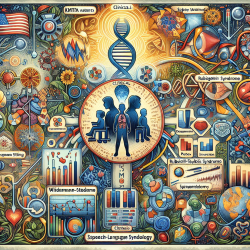Understanding the Role of miRNA and sncRNA in Autism Spectrum Disorder
Autism Spectrum Disorder (ASD) presents a unique challenge in understanding due to its complex interplay of genetic, environmental, and neurodevelopmental factors. Recent research has shed light on the potential sexually dimorphic roles of microRNA (miRNA) and small noncoding RNA (sncRNA) in the ASD brain, offering new insights into how these molecules might influence the development and manifestation of ASD.
The Significance of Sexual Dimorphism in ASD
ASD is known to exhibit sexual dimorphism, with differences in brain structure, genetics, and behavior between males and females. This research highlights the importance of considering sex as a significant factor in molecular studies of ASD. The study examined the expression of sncRNAs, including miRNAs, in the temporal cortex of both male and female ASD and control brains.
Key Findings from the Research
- Sexual dimorphism in sncRNA expression persists in the temporal cortex of ASD individuals.
- miRNAs such as miR-219 and miR-338, which are involved in oligodendrocyte differentiation, show sexually dimorphic expression.
- Putative miRNA targets are significantly over-represented in immune and nervous system pathways, with distinct differences between sexes.
Implications for Practitioners
For practitioners working with ASD, these findings underscore the importance of tailoring interventions and treatments based on the biological sex of the individual. Understanding the sexually dimorphic roles of miRNAs and sncRNAs can guide more personalized approaches to therapy and care.
Practitioners are encouraged to consider the following:
- Incorporate sex-specific considerations in diagnostic and therapeutic strategies.
- Stay informed about ongoing research in molecular pathways involved in ASD.
- Engage in further research to explore the therapeutic potential of targeting miRNA and sncRNA pathways.
Encouraging Further Research
This study opens the door for further research into the molecular underpinnings of ASD. By exploring the sexually dimorphic expression of miRNAs and sncRNAs, researchers can uncover new pathways and targets for intervention. Practitioners and researchers alike are encouraged to delve deeper into this promising area of study.
To read the original research paper, please follow this link: Possible sexually dimorphic role of miRNA and other sncRNA in ASD brain.










